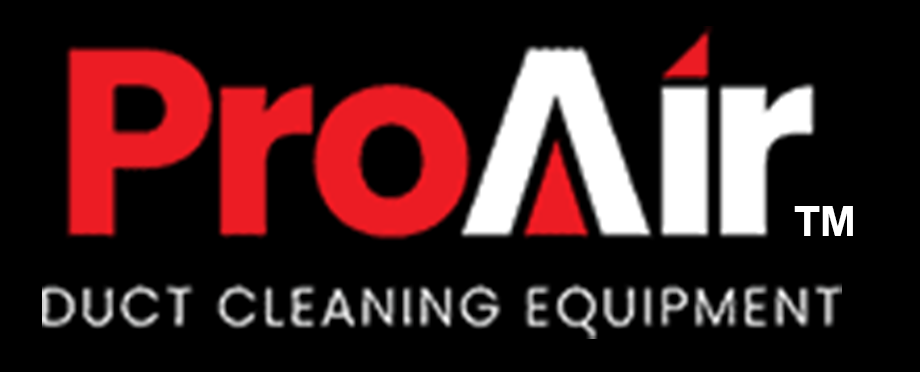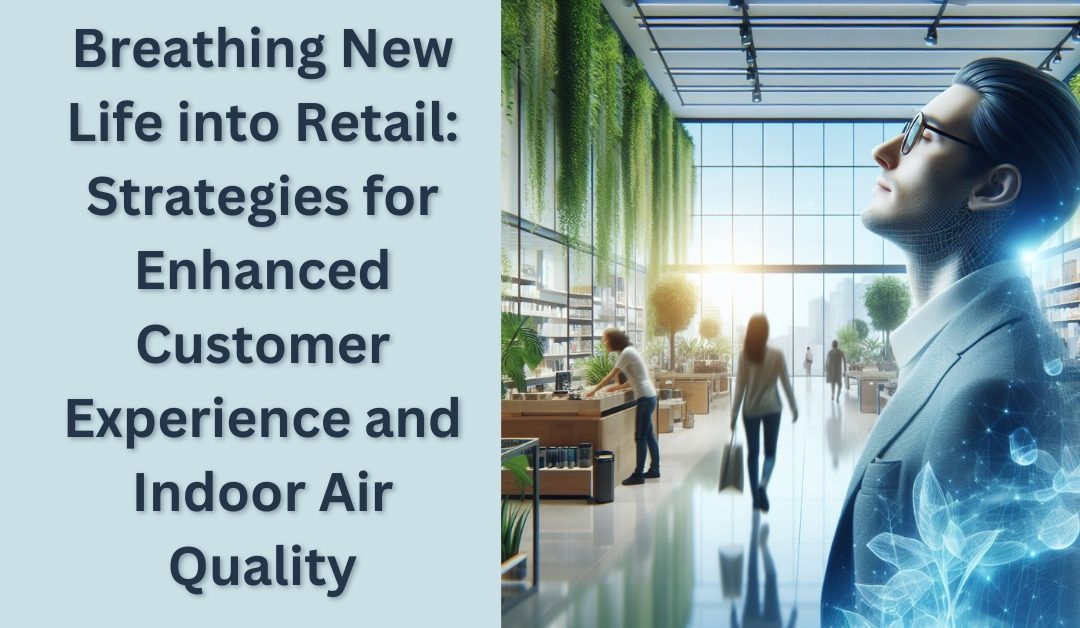In today’s dynamic business landscape, the quest for competitive advantage extends beyond traditional metrics of success. During the pandemic, the focus was on online customer experience. However, people now seek the normal, and retailers have to shift their focus from online customer experience to real life.
While factors like excellent service and product quality have long been acknowledged as crucial drivers of customer experience management, there exists an often overlooked yet pivotal element: the quality of the air we breathe.
With indoor air pollution in retail stores linked to decreased health and productivity among employees, as well as diminished experiences for customers, the imperative for clean air in retail stores has never been more pronounced. Businesses need to prepare a comprehensive retail store cleaning checklist to ensure hygiene and a clean environment.
Indeed, the benefits of investing in clean indoor air are multifaceted, which ultimately contribute to increased profitability. As such, businesses are called upon to breathe new life into their spaces by prioritizing cleaner air.
As the #1 Best Rated Air Duct Cleaning Equipment Manufacturer that is trusted by cleaning professionals, we promote the vision of enduring business success by prioritizing cleaner air as a cornerstone for customer experience management strategy. So, scroll on if you, too, want a transformative future where clean air becomes synonymous with exceptional satisfaction for your customers.
Strategies for improving indoor air quality and enhancing customer experience
In the bustling world of retail, after the pandemic, there has been an increase in the demand for cleaning professionals. In your retail cleaning checklist, every detail matters, and ensuring optimal indoor air quality (IAQ) is a strategic imperative.
Customers don’t appreciate poor air quality in their surroundings. It is time to pay attention to the dirty air vents!
From retaining customer relationship management to fostering a comfortable and enjoyable shopping environment, IAQ plays a crucial role in shaping the overall customer experience. Let’s delve into practical strategies for enhancing IAQ and customer satisfaction in retail spaces:
- Communication and professional consultation: Maintaining a high standard of IAQ requires effective communication among internal stakeholders and obtaining feedback from customers. Engaging with professionals to ensure that protocols and air filtration systems are up-to-date is essential. Collaboration between businesses, technology providers, and public health services is vital for prioritizing safety and regaining customer trust.
- Adoption of IAQ technologies: The impact of pollution on consumer decision-making is detrimental. Investing in innovative IAQ technologies can significantly improve poor air quality within retail stores as they work on pollutants such as volatile organic compounds. Electronic air cleaners, humidity sensors, UV lights, air purifiers, and advanced HVAC systems are among the essential gadgets that effectively remove pollutants having harmful organic compounds, regulate humidity levels, and ensure the circulation of clean air. Integrating intelligent sensors into building management systems allows for real-time monitoring and automatic adjustment of airflow and ventilation.
To create a welcoming and healthy environment for customers, retailers are increasingly turning to innovative strategies, natural ventilation, and green solutions to enhance indoor air quality and elevate the overall shopping experience. A comfortable and inviting shopping environment created by natural ventilation enhances customer engagement, leading to increased dwell time and higher sales.
Let’s explore some key strategies for integrating natural ventilation into retail spaces:
- Implementation of natural ventilation systems: Natural ventilation, which harnesses outdoor air to cool and ventilate indoor spaces, offers numerous benefits for retail stores. By reducing reliance on mechanical cooling systems, natural ventilation enhances energy efficiency, improves indoor air quality, and contributes to cost savings. You can strategically design store layouts, incorporate windows, skylights, and atriums, and utilize smart ventilation systems to optimize airflow and ventilation.
- Consideration of key factors: Effective implementation of natural ventilation requires careful consideration of various factors, including the local climate conditions and surrounding environment. By strategically placing windows and skylights, understanding prevailing wind patterns, and integrating shading devices, retailers can maximize natural airflow and minimize reliance on artificial cooling systems.
- Utilization of innovative solutions: Advancements in technology have led to the development of innovative solutions for enhancing natural ventilation in retail spaces. Smart ventilation systems, windcatchers, and natural ventilation fans offer precise control over the air conditioning system’s airflow and temperature, catering to a comfortable customer experience.
- Environmental sustainability and customer engagement: The world is already burning with the excessive carbon dioxide emitted. In such an environment, retailers can leverage natural ventilation as a key differentiator, showcasing their eco-friendly practices and attracting environmentally conscious customers. Incorporating natural ventilation reduces energy consumption and operating costs and demonstrates a commitment to environmental sustainability.
Industry statistics show that green buildings with good indoor air quality increase productivity by 8-11% in retail environments. Another positive indicator is that green buildings experience a 30% reduction in energy consumption overall. These statistics highlight the significant impact of natural ventilation on both sustainability and customer satisfaction.
Grappling with the spike in precautions after COVID-19, not only the medical market but also the real estate market and labor market are investing in cleaning staff. By creating a good impression of a clean environment, businesses want to have a positive impact on consumers.
An immersive retail environment is essential for attracting customers, fostering engagement, and driving sales. Employing a variety of strategies can help retailers craft a space that resonates with their brand identity and enhances the overall shopping experience.
Here are a few personal touches you can add to your strategy:
- Setting the mood: Atmospherics, including music selection, lighting, and overall ambiance, play a crucial role in shaping the retail environment. Retailers should curate an atmosphere that aligns with their brand image and the preferences of their target demographic. Whether it’s lively music in a bustling coffee shop or calming lighting in a tranquil wine store, the ambiance should complement the products and enhance the shopping experience.
- Promos and displays: Visual merchandising involves strategically arranging products and displays to create an aesthetically pleasing and engaging environment. By organizing products based on color schemes, themes, and related merchandise, retailers can encourage exploration and facilitate cross-selling opportunities. Effective visual merchandising not only enhances the store’s aesthetics but also influences consumer behavior and strengthens brand impressions.
- Art of planning layout: Thoughtful floor plan design can significantly impact on consumers’ traffic flow and shopping behavior. An open and spacious layout with clear sightlines encourages exploration and impulse purchases. At the same time, strategic placement of product displays and checkout counters enhances product visibility and accessibility. Regularly updating the floor plan keeps the shopping experience fresh and encourages repeat visits.
- Navigational Aids: Clear and well-placed signage is essential for guiding customers through the store and enhancing their overall experience. Signs should mark sections, highlight products, and provide pricing information to facilitate navigation and promote sales. Utilizing electronic shelf labels ensures accurate and up-to-date pricing. At the same time, well-executed signage instills confidence in customers and fosters a sense of professionalism.
- Retail Staff: Well-trained and friendly staff members are integral to creating a welcoming, hospitable, and clean environment for customers. Employees should be knowledgeable about the store’s layout and products, capable problem solvers, and willing to assist customers with their needs. An effective strategy for customer relationship management is positive interaction with staff, which enhances the shopping experience and fosters customer loyalty.
- Hospitality: Going beyond traditional cleanliness measures, incorporating personalized touches demonstrates a commitment to customer well-being. Offering complimentary hand sanitizers, refreshing wipes, or small gifts enhances the shopping experience and fosters customer loyalty.
- Prompt response to cleaning needs: Actively addressing cleanliness concerns raised by customers and promptly resolving issues such as spills or stains reinforces a comfortable and clean environment. Regular maintenance and upkeep of facilities, including lighting, restroom facilities, and seating areas, contribute to a positive customer experience. Make a note of emptying the trash bins every day.
- Soliciting feedback and staff training: Encouraging customers to provide feedback on cleanliness allows for continuous improvement. Comprehensive training for cleaning staff emphasizes the importance of their role in creating a positive, clean environment. Regular evaluation and recognition of staff efforts foster accountability and excellence in maintaining cleanliness standards.
- Emphasizing the importance of cleanliness: Even trash cans are essential in your retail store. Reflecting a quality environment through clean windows, door fronts, and fresh floors creates a positive first impression and instills confidence in customers.
- Experiential Retail: Appeal to all the senses to create a memorable shopping experience. Whether it’s the aroma of freshly roasted coffee beans, the subtle scent of burning candles and air freshener, or the tactile engagement of sampling products, engaging customers’ senses draws them into the shopping experience and encourages in-person purchases. Experiential retail activities turn casual browsers into enthusiastic buyers.
- Special Events and Experiences: Hosting special events and experiences adds excitement and allure to the retail environment, driving customer traffic and fostering loyalty. Whether it’s a wine-tasting event at a wine store or a live coffee-roasting demonstration at a cafe, these experiences create lasting memories and associations with the retail space, encouraging repeat visits and increased sales.
These customer experience management strategies can create a dynamic and engaging retail environment.
Conclusion
In retail, indoor air quality quietly influences customer experiences from the moment they enter. Recognizing the importance of cleanliness, businesses must integrate cleaning and maintenance into their customer satisfaction strategies. This approach helps in fostering deeper connections with customers. Enhancing customer loyalty through the retail ambiance shapes perceptions and consumer decision-making.
Embrace the fresh air revolution to lead to a new era of excellence.
In the wake of the COVID-19 pandemic, indoor air quality has a significant impact on consumers. If you are a responsible business looking to enhance your customers’ experience and hygiene of your retail store, contact ProAir Industries for the optimal cleaning experience.

